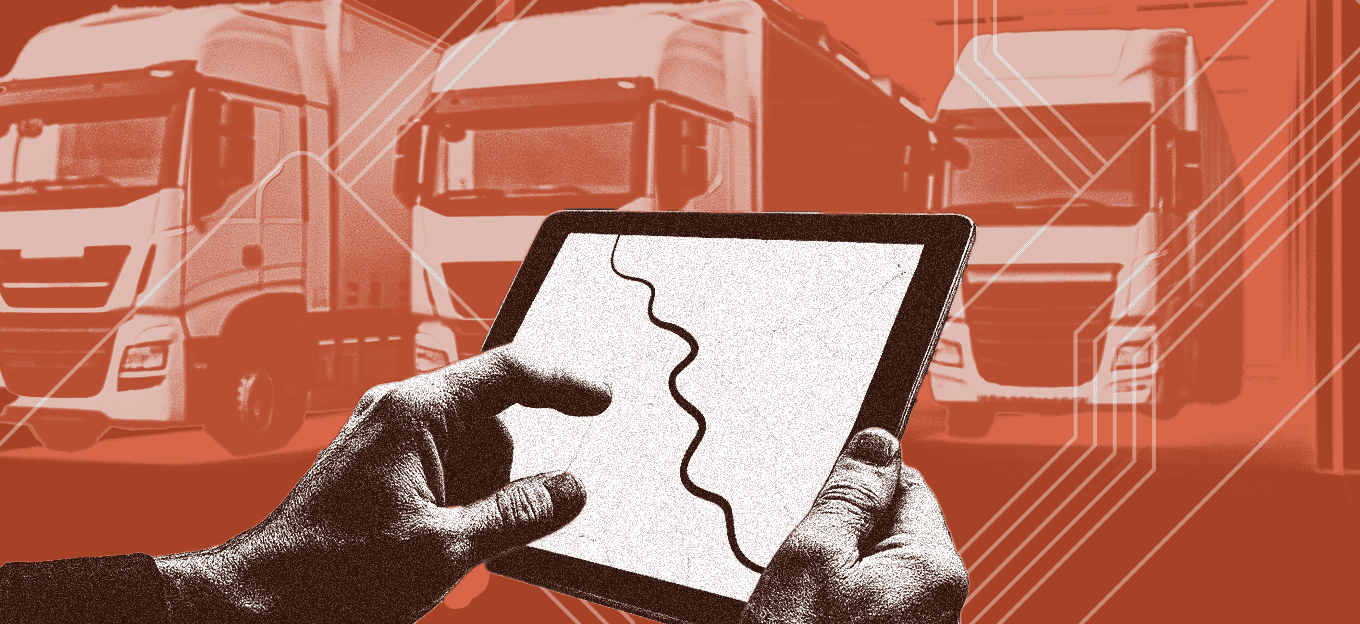What Are Connected Fleets and How Do They Work?
What Are Connected Fleets and How Do They Work?
- Last Updated: April 15, 2025
KORE
- Last Updated: April 15, 2025



Managing a fleet today requires more than just keeping track of vehicles on the road. Rising operational costs, stricter regulations, and the demand for real-time efficiency have made fleet management more complex than ever. Businesses need a way to ensure driver safety, vehicle performance, and compliance – while also optimizing costs.
This is where connected fleet solutions come in. By leveraging real-time data, telematics, and cloud-based analytics, fleet operators can track vehicle performance, optimize routes, monitor driver behavior, and proactively schedule maintenance to prevent costly disruptions. For organizations relying on fleets – whether for logistics, delivery, or transportation – integrating connected fleet technology is no longer optional.
Understanding Connected Fleets
A connected fleet is a network of vehicles that use IoT sensors, telematics, and GPS tracking to enable real-time communication and data-driven decision-making.
Key benefits of connected fleet technology include:
- Real-time tracking to optimize fleet movements and reduce fuel costs.
- Enhanced safety through driver behavior monitoring and compliance tracking.
- Predictive maintenance to address vehicle issues before they cause breakdowns.
- Automated compliance and reporting to simplify regulatory requirements.
By integrating IoT-driven connectivity, businesses gain complete visibility into their fleets, reducing inefficiencies and improving performance.
The Role of IoT in Fleet Connectivity
IoT sensors, GPS trackers, and cloud-based analytics allow fleet managers to:
- Monitor vehicle locations and route efficiency to optimize dispatching.
- Receive real-time alerts on driving behaviors.
- Track vehicle health and automate maintenance schedules to prevent costly failures.
Key Benefits of Connected Fleets
Enhancing Operational Efficiency
Connected fleets provide continuous visibility into vehicle operations, helping businesses:
- Minimize downtime with predictive maintenance alerts.
- Optimize fuel usage through smarter route planning.
- Increase fleet utilization by identifying inefficiencies.
- Reduce administrative burden with automated compliance reporting.
Boosting Safety and Compliance
By tracking driver behavior and vehicle health, connected fleets improve:
- Accident prevention through real-time safety alerts.
- Regulatory compliance with automated tracking of Electronic Logging Devices (ELDs)/Hours of Service (HOS) requirements.
- Emergency response capabilities, allowing faster intervention in critical situations.
Technologies Powering Connected Fleets
The technologies behind connected fleets, including GPS, IoT devices, and cloud computing, work together to enable real-time monitoring and analysis.
- GPS and Location Tracking: Real-time tracking of fleet locations and movements allows businesses to optimize routes and improve overall fleet efficiency.
- IoT Devices and Sensors: These devices collect crucial data on vehicle performance, fuel usage, and driver behavior, helping businesses monitor operations and prevent disruptions.
- Cloud Computing and Data Analytics: Cloud platforms analyze fleet data to provide actionable insights that guide decision-making, enabling improved performance and cost savings.
Implementing Connected Fleet Solutions
Choosing the Right Technology Partner
Selecting the right connected fleet solution provider is critical for success. Companies should look for:
- Proven expertise in IoT, telematics, and fleet connectivity
- Scalable solutions that adapt to business growth
- Advanced security measures to protect fleet data
- Comprehensive integration support to ensure seamless deployment
Choosing a provider that delivers reliable IoT connectivity ensures businesses can maintain seamless fleet operations while avoiding security risks and inefficiencies.
Integration with Existing Systems
Many businesses struggle with legacy systems that may not easily connect to new IoT platforms. A well-planned integration strategy ensures seamless data synchronization and minimal downtime. Seamlessly integrating connected fleet technologies into existing operations requires careful planning and implementation. Businesses should consider:
- API and software compatibility – Ensure the IoT platform integrates with existing fleet management systems, ERP software, and cloud databases.
- Minimal disruption during implementation – Deploy IoT solutions in phases to avoid major interruptions to daily operations.
- User training and support – Provide fleet managers and drivers with training and onboarding to maximize adoption and efficiency.
- Data migration and synchronization – Ensure historical fleet data is properly transferred and synchronized with new IoT systems.
A smooth integration process minimizes downtime, enhances productivity, and ensures companies maximize their IoT investment.
The Future of Connected Fleets
The future of fleet management is data-driven, automated, and highly efficient. Advancements in 5G, AI, and edge computing will continue to enhance fleet connectivity, enabling even faster decision-making and predictive analytics.
Looking ahead, businesses can expect:
- Increased automation, reducing manual fleet management tasks
- Smarter AI-driven insights for real-time optimization
- Greater sustainability, with IoT helping reduce fuel consumption and carbon footprints
By adopting connected fleet technology, businesses will gain a competitive edge through increased efficiency, lower operational costs, and improved safety.
The Most Comprehensive IoT Newsletter for Enterprises
Showcasing the highest-quality content, resources, news, and insights from the world of the Internet of Things. Subscribe to remain informed and up-to-date.
New Podcast Episode

What is Software-Defined Connectivity?
Related Articles



